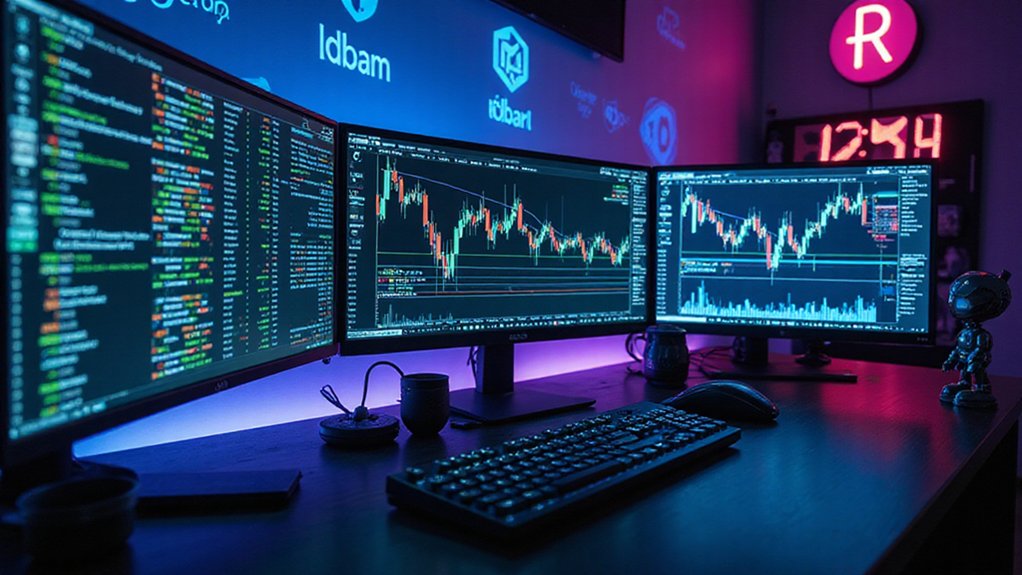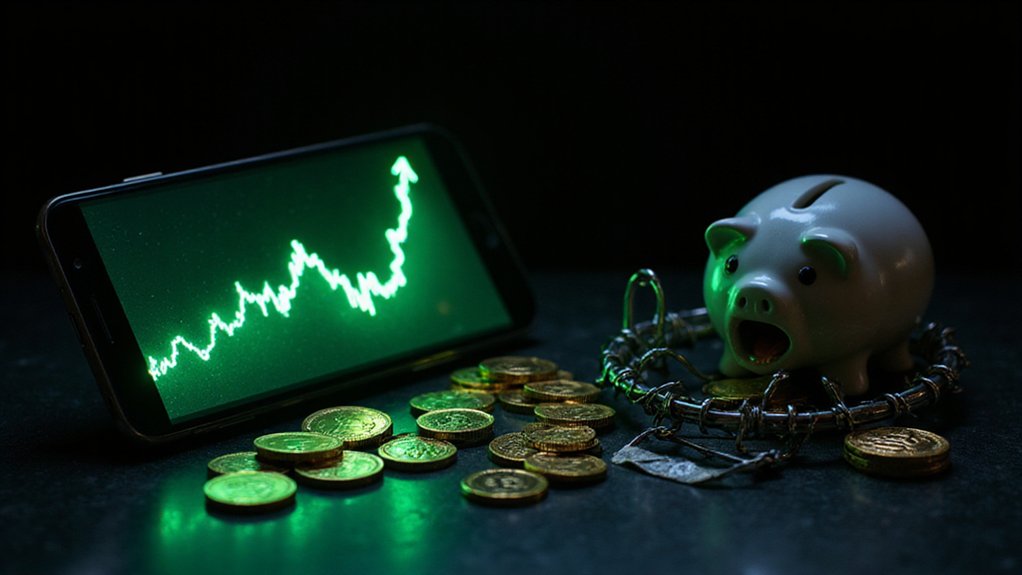Slippage represents the maddening gap between expected and executed trade prices in cryptocurrency markets—an invisible tax on the unwary. This discrepancy emerges when market conditions shift between order placement and execution, particularly in volatile or illiquid environments. Calculated as a percentage difference, even modest slippage compounds dramatically over time, eroding returns with ruthless efficiency. Sophisticated traders employ limit orders, timing strategies, and explicit tolerance parameters to tame this persistent market friction. The difference between profitable trading and costly disappointment often lies in these seemingly minor details.

Why does the crypto market—despite its technological sophistication and billion-dollar infrastructure—still routinely subject traders to the financial equivalent of a bait-and-switch?
The culprit is slippage: that maddening gap between the price you expect and the price you actually get when executing a trade.
Slippage—the invisible tax that transforms expected bargains into unexpected burdens with ruthless efficiency.
In an ecosystem that prides itself on disrupting traditional finance, this fundamental inefficiency persists with remarkable tenacity.
Slippage manifests when market conditions shift between the moment an order is placed and when it’s executed.
This phenomenon, while not unique to cryptocurrency markets, finds particularly fertile ground in their characteristic volatility.
Price fluctuations occur with such frequency and magnitude that the quoted price at order placement often bears little resemblance to the execution price mere moments later.
The mechanics behind slippage are straightforward enough: market volatility combines with liquidity constraints to create price discrepancies.
Large orders in thinly-traded markets basically consume available liquidity at each price level, pushing execution prices progressively away from expectations.
Network congestion—a uniquely cryptocurrency-centric problem—further exacerbates these effects by extending confirmation times.
Calculating slippage is elementary mathematics: subtract the execution price from the expected price, divide by the expected price, multiply by 100.
Yet its impact on trading profitability is anything but simple.
A seemingly negligible 2% slippage on repeated trades compounds into significant erosion of returns over time.
For large-scale trades, even minor slippage percentages can translate to substantial monetary losses.
Traders aren’t entirely defenseless against this phenomenon.
Limit orders (rather than their market counterparts) allow price boundaries to be established, effectively refusing execution beyond acceptable thresholds.
Setting explicit slippage tolerance parameters provides another layer of protection.
Unlike market orders, limit orders guarantee the execution price but cannot ensure the order will be filled, especially during highly volatile periods.
Trading during periods of higher liquidity—and avoiding significant announcements or market upheavals—further mitigates risk.
The most sophisticated crypto traders have incorporated slippage into their strategic calculus, recognizing it not as an occasional inconvenience but as an omnipresent market friction demanding constant attention.
In a market where milliseconds and basis points determine success, understanding and managing slippage isn’t optional—it’s existential.
Decentralized platforms often pose additional challenges due to their lower liquidity levels, which typically results in higher slippage compared to centralized exchanges.
Unfortunately, some trading platforms may become page unavailable during high volatility periods, further complicating slippage management for traders.
Frequently Asked Questions
How Can I Completely Avoid Slippage When Trading Crypto?
Complete slippage elimination is fundamentally impossible in cryptocurrency markets—an inconvenient truth traders must accept.
However, one can mitigate it substantially through limit orders (the trader’s preemptive defense), high-liquidity platform selection, and strategic trade timing.
The most effective approach involves using limit orders exclusively, which execute only at specified prices or better.
This strategy trades immediate execution certainty for price protection—a worthwhile compromise in volatile markets where price predictability remains elusive.
Does Slippage Affect Limit Orders the Same as Market Orders?
No, slippage affects market and limit orders fundamentally differently.
Market orders—the financial equivalent of saying “I’ll take whatever I can get”—regularly fall victim to slippage as they execute at prevailing prices regardless of shifts between placement and execution.
Limit orders, conversely, function as price gatekeepers, executing only at specified thresholds or better, effectively eliminating unexpected slippage.
The trade-off? Limit orders might not execute at all if prices never reach your target.
Which Cryptocurrencies Typically Experience the Highest Slippage Rates?
Cryptocurrencies experiencing the highest slippage rates typically fall into predictable categories: newly launched tokens with microscopic market caps, meme coins riding waves of social media hysteria, and obscure altcoins languishing on smaller exchanges.
The culprits share common characteristics—thin liquidity pools, volatile price action, and limited market depth.
Tokens on less popular blockchains suffer particularly acute slippage woes.
While community tokens and NFT-related assets often subject traders to eye-watering execution price deviations during periods of market turbulence.
Can Slippage Ever Work in a Trader’s Favor?
Yes, slippage can indeed work in a trader’s favor through positive slippage—when execution prices prove better than anticipated.
This fortuitous outcome typically emerges during volatile market conditions or rapid directional shifts.
While traders shouldn’t build strategies around such serendipitous events (what a folly that would be!), those who execute during high liquidity periods or sudden sentiment changes occasionally find themselves pleasantly surprised.
The phenomenon remains largely unpredictable, however—a financial windfall akin to finding unexpected cash in last season’s coat pocket.
How Do Flash Crashes Influence Slippage in Cryptocurrency Markets?
Flash crashes dramatically amplify slippage in cryptocurrency markets through sudden liquidity vaporization.
When markets plummet precipitously, order books thin out as market makers retreat, creating execution gaps between expected and actual prices.
These liquidity vacuums—often triggered by cascading liquidations, algorithmic trading decisions, or whale movements—can transform modest slippage into catastrophic price divergence.
During these moments, trades that might typically experience 0.5% slippage could face 10-20% discrepancies, especially on less liquid altcoin pairs.









